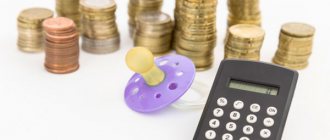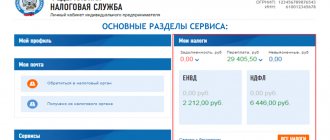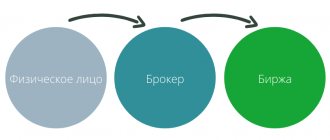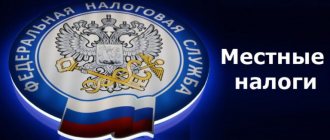Conditions for applying benefits when purchasing medicines
The application of the right to receive personal income tax benefits in connection with the purchase of pharmaceutical products for personal needs is provided for in clause 1 of Art. 219 of the Tax Code of the Russian Federation. Belonging to the social category, this tax deduction is limited to an amount not exceeding 120,000 rubles. for the tax period. It turns out that the payer can save no more than 15,600 rubles on personal income tax for 12 months of the year. (120,000 × 13% / 100%).
In this case, the amount of tax to be refunded cannot exceed the amount withheld and paid during 12 months of the year. Currently, to exercise his right to the described benefit, a citizen can take two paths:
- wait until the end of the tax period (year) in which the medicines were purchased and apply for a deduction to the tax office.
- starting in 2021, you don’t have to wait until the end of the year and apply for the deduction directly to your employer.
In addition, to comply with the legality of applying the deduction and subsequent tax refund, it is necessary to fulfill certain requirements:
- medications must be purchased based on a prescription from the attending physician;
- the source of funds for the purchase must be the taxpayer's income.
If the employer paid for the medications received, the employee will not be entitled to any deduction.
And now the important secrets
- Insist that the doctor writes out the prescription in two copies, since one will remain in the pharmacy, but the other must be in your hands to present it to the Tax Inspectorate.
- Previously, a prerequisite for acceptance of a prescription form by the tax office was the presence of a stamp on it with the inscription “for tax authorities.” Now there is no such requirement, but if they can put an additional stamp on your prescription, do not refuse. The more stamps, the more solid and significant the document will be for the tax inspector.
- There is one exception when a prescription is not needed. This is possible if you were treated in a hospital. If during treatment you are prescribed medications that you have to buy at your own expense, then in this case the tax office will need to provide extracts from the outpatient card, where the doctor will list the prescribed medications.
Names of medications available for deduction
The main document establishing the list of pharmaceutical treatments, the costs of which reduce the personal income tax base, is the Decree of the Government of the Russian Federation dated March 19, 2001 No. 201. To compile the list contained therein, international non-proprietary names of drugs were used. It is accepted that the drugs named in the list may have other names. All designations of medical devices given in it are indicated in a specialized register, which is published annually by the Ministry of Health of the Russian Federation. To familiarize yourself with it, go to the website grls.rosminzdrav.ru.
The absence of a drug prescribed by a doctor in the described document is grounds for refusal to provide benefits. This is indicated by the letter of the Federal Tax Service for Moscow dated 06/01/2010 No. 20-14/4/ [email protected] At the same time, the Ministry of Health catalog contains drugs that can only be purchased on the basis of a prescription, as well as those that are on free sale.
For a more complete picture of the issue described, below is an abbreviated list of medications without indicating the form of their production:
- Means for reducing body sensitivity (anesthesia) and relieving skeletal muscle tension:
- preparations for general anesthesia (hexobarbital and sodium thiopental in all forms; essences for injections - ketamine and sodium oxybate, gaseous substance dinitrogen oxide in containers; diethyl ether and halothane inhalation agent);
- substances for local anesthesia (bupivacaine and lidocaine);
- drugs that relax skeletal muscles (powder for injections of botulinum toxin; injection mixture of atracurium besylate, albumin; vecuronium bromides, pipecuronium, suxamethonium).
- Analgesics:
- related to narcotics (morphine in any form, piritramide, trimeperidine, fentanyl and a mixture of morphine, narcotine, papaverine, codeine, thebaine in injection form);
- drugs not related to narcotics and steroids (aspirin, diclofenac sodium, lornoxicam, ibuprofen, tramadol, nalbuphine, ketoprofen, meloxicam in tablet form);
- a drug for joint and tissue diseases (allopurinol);
- other medicines classified in this category (penicillamine, colchicine).
- Medicines to combat allergies (ketotifen, quifenadine, chloropyramine).
- Means of action on the central nervous system:
- against spasms (carbamazepine, phenytoin, clonazepam, phenobarbital, ethosuximide, valproic acid);
- for the treatment of Parkinson's disease (biperiden, trihexyphenidyl, a mixture of levodopa and carbidopa, amantadine, a mixture of levodopa and benserazide);
- drugs to combat neuropsychiatric diseases (haloperidol, clozapine, medazepam, perphenazine, thioproperazine, fluspirilene, phenazepam, periciazine, chlorpromazine, chlorprothixene, diazepam, levomepromazine, nitrazepam, sulpiride, pipotiazine, thioridazine, zuclopenthixol, lorazepam, trifluoperazine, flu phenazine);
- medications to counteract depression (amitriptyline, clomipramine, lithium carbonate, maprotiline, moclobemide, sertraline, tianeptine, citalopram, imipramine, mianserin, fluoxetine);
- anti-insomnia medications (zolpidem);
- drugs related to the prevention and treatment of multiple sclerosis (interferon beta and glatiramer acetate);
- neutralizing the effects of drug use (naltrexone and naloxone);
- anticholinesterase drugs (neostigmine methyl sulfate, distigmine and pyridostigmine bromides);
- other drugs belonging to the above category (nimodipine, vinpocetine, a mixture of hexobendine, etamivan and etophylline).
- Drugs for the prevention and treatment of infection:
- antibacterial agents (azithromycin, ampicillin, sulfacetamide, mupirocin, vancomycin, doxycycline, clarithromycin, meropenem, norfloxacin, cefoperazone, ceftazidime, ciprofloxacin, cefaclor, cefotaxime, amikacin, josamycin, benzathine benzylpenicillin, carbene icillin, gentamicin, imipenem, co-trimoxazole, mesalazine, pefloxacin, chloramphenicol, cefepime, ceftriaxone, erythromycin, amoxicillin + clavulanic acid, benzylpenicillin, lincomycin, spiramycin, cefuroxime);
- anti-tuberculosis drugs (isoniazid, prothionamide, pyrazinamide, rifampicin, streptomycin, rifabutin, lomefloxacin, ethionamide, ethambutol);
- Drugs to suppress viral infections (acyclovir, zidovudine, lamivudine, ganciclovir, indinavir, nevirapine, didanosine, efavirenz, stavudine);
- agents for the destruction of fungal diseases (amphotericin B, itraconazole, clotrimazole, B + N-methylglucamine, amphotericin, griseofulvin, terbinafine);
- pharmaceutical products for the treatment of malaria and other antiprotozoal purposes (hydroxychloroquine, chloroquine, metronidazole);
- other medicinal products of a similar nature (bifidumbacterin);
- drugs for the prevention and treatment of immunodeficiency virus.
- Immunosuppressive drugs, as well as those used in the treatment of tumor development:
- antitumor drugs (azathioprine, bleomycin, chlorambucil, vincristine, hydroxycarbamide, daunorubicin, idarubicin, calcium folinate, clodronic acid, methotrexate, oxaliplatin, cyclophosphamide, prospidium chloride, tretinoin, cytarabine, aranose, busulfan, vinorelbine, dacarbazine, doxorubicin, irinotecan, d actinomycin , docetaxel, carboplatin, melphalan, mitoxantrone, paclitaxel, thioguanine, thiotepa, fluorouracil, fludarabine, epirubicin, asparaginase, vinblastine, gemcitabine, ifosfamide, carmustine, mercaptopurine, mitomycin, procarbazine, cisplatin, etoposide);
- drugs that affect hormonal levels (aminoglutethimide, tamoxifen, goserelin, triptorelin, anastrozole, ganirelix, medroxyprogesterone, flutamide, cetrorelix);
- other drugs that help treat tumors (interferon alfa, ondansetron, filgrastim, lenograstim, molgramostim).
- Medicines to combat osteoporosis (alendronic acid, alfacalcidol, calcitonin, calcium carbonate and ergocalciferol).
- Medicines for the treatment of the blood system:
- medications to treat anemia (sucrose ferric hydroxide complex, epoetin beta, folic acid, cyanocobalamin, ferrous sulfate, ferric sulfate and ascorbic acid);
- agents to regulate clotting (alprostadil, nadroparin calcium, ticlopidine, streptokinase, enoxaparin sodium, alteplase, pentoxifylline, protamine sulfate + sodium heparin, phenindione);
- plasma expanders and similar solutions (amino acids for parenteral nutrition, dextrose, hemin, pentastarch);
- other pharmaceutical products associated with blood plasma (albumin, coagulation factors VIII and IX);
- means to reduce the level of certain lipid fractions (phospholipids + pyridoxine + nicotinic acid + adenosine monophosphate, simvastatin).
- Means for the prevention and treatment of heart and vascular diseases:
- drugs against coronary heart disease (isosorbide dinitrate and mononitrate, nitroglycerin);
- drugs for the treatment of heart rhythm disorders (allapinin, metoprolol, etacizine, quinidine, atenolol, amiodarone, procainamide, propafenone);
- medications for hypertensive patients (azamethonium bromide, betaxolol, methyldopa, verapamil, nifedipine, amlodipine, doxazosin, propranolol, fosinopril);
- drugs for the treatment of heart disorders (valsartan, captopril, enalapril, digoxin, quinapril, irbesartan, perindopril);
- antishock medications.
- Diagnostic drugs:
- for X-ray examination (sodium amidotrizoate, gadopentetic acid, iopromide, mixture: barium sulfate, sodium citrate, sorbitol, antifomsilan, nipagin, galactose, gadodiamide, iohexol);
- agents that emit light radiation (sodium fluorescein);
- radioisotope substances (albumin microspheres, pirfotech, technefor, bromezide, pentatech, technefit).
- Disinfectants and disinfectants (iodine, hydrogen peroxide).
- Drugs for the treatment of disorders of the gastrointestinal tract:
- antacid and antiulcer drugs (omeprazole, famotidine, pirenzepine);
- antispasmodics (atropine, platyphylline, drotaverine);
- enzymes - pancreatin;
- for liver failure (lactulose, artichoke leaf extract);
- antienzyme agent - aprotinin.
- Drugs with hormonal pharmacological effects:
- antihormonal drugs that do not affect sexual function (betamethasone, lutropin alfa, nandrolone, somatropin, triamcinolone, bromocriptine, deoxycortone, follitropin alfa, cyproterone);
- androgen drugs (methyltestosterone tablets);
- drugs containing female hormones (hydroxyprogesterone, ethinyl estradiol, progesterone, dydrogesterone, norethisterone);
- drugs for the prevention and treatment of diabetes mellitus (acarbose, gliclazide, pioglitazone glucagon, hydrochloride, glibenclamide, glimepiride, insulin DlD, KD, Comb SrD, glipizide, metformin, gliquidone, repaglinide).
- Drugs to combat kidney and urinary system diseases:
- used for inflammation of the prostate gland (finasteride, alfuzosin, tamsulosin, creeping palm extract);
- used in the case of kidney transplantation and in cases of impaired functioning (antithymocyte immunoglobulin, solution for peritoneal dialysis, keto analogues of amino acids, cyclosporine);
- diuretics (hydrochlorothiazide, furosemide, mannitol, spironolactone, indapamide).
- Means for the prevention and treatment of eye diseases:
- to combat inflammation (azapentacene, pyrenoxine, lodoxamide, mixture: cytochrome + sodium succinate + adenosine + nicotinamide + benzalkonium chloride);
- means to reduce eye pressure (dorzolamide drops, timolol and pilocarpine);
- medications to improve the metabolic processes of the eye - emoxypine.
- Uterine preparations:
- containing hormones (methylergometrine, oxytocin, pituitrin, ergometrine);
- other drugs with a similar spectrum of action (dinoprost, hexoprenaline, dinoprostone).
- Means for the prevention and treatment of upper respiratory tract diseases:
- for the treatment of shortness of breath, difficulty breathing, asthma (ambroxol, budesonide, ipratropium bromide, disodium cromoglycate, theophylline, aminophylline, epinephrine, aminophylline, nedocromil, terbutaline, beclomethasone, a mixture of ipratropium bromide and fenoterol hydrobromide, salbutamol, fenoterol);
- similar pharmaceutical products of the described direction.
- Nutritional products, electrolytes:
- nutritional mixtures (phenyl-free powders and lofenalac);
- electrolytes (potassium chloride, calcium chloride; iodide, aspartate; magnesium aspartate; sodium citrate and bicarbonate; electrolyte solutions).
- Vitamins - thiamine and menadione.
Mechanism for exercising the right to benefit
To exercise your right to a tax deduction for medicines , you will have to collect a strictly defined list of papers:
- tax return 3-personal income tax;
- Form 2-NDFL with information about income;
- a doctor’s prescription written out on a prescribed form, specifically for presentation to tax authorities;
- payment papers confirming expenses for medicines.
Personal income tax reporting must be submitted to the Federal Tax Service by the citizen no later than April 30 of the year after the end of the reporting period. If at the same time the individual did not have additional income that needs to be reflected in it, and the main purpose of the application is to receive benefits, this restriction does not apply. In this case, he has 3 years from the date of purchase of the medicines to exercise his right to a deduction.
After the declaration is submitted to the Federal Tax Service specialists, a desk audit begins, for which a limited period of time is allotted to 3 months. After its completion, tax authorities are given exactly one month to return the due amount.
Since 2021, it has become possible to use the deduction directly from the employer. In this case, there is no need to delay resolving the issue until the end of the tax period. An employee can submit an application along with a tax notice for a deduction directly to the employer's accounting department. To receive a notification, a written application to the Federal Tax Service is required. After such an application is accepted by the tax authorities, a notification is provided within 30 days. The application must be accompanied by documents certifying the expenses incurred (prescriptions, payment documents).
Documents for the purchase of medicines
Starting in 2021, you can return 13% of the amounts spent on the purchase of any medicines.
An important condition is the presence of a prescription written by a doctor on a special form
. This is where, as a rule, the biggest problems arise, since for some reason doctors categorically do not like to draw up official documents, but prefer to write medical prescriptions on a simple piece of paper. Alas, the tax office will not return money for such manuscripts.
Therefore, it is important to get a prescription from your doctor on official letterhead with all the stamps. And buy medications at the pharmacy strictly in accordance with the names indicated in the prescription, because if you decide to buy some kind of analogue of the medicine suggested by the doctor, the Federal Tax Service will also refuse to deduct.
Peculiarities of using deductions when purchasing medicines for relatives
In circumstances where medical assistance was required by minor children or spouses, in order to receive benefits it will be necessary to expand the transferred list of documents to a copy of the marriage certificate or a copy of the birth document. They will have to be endorsed with a personal signature with a transcript and dated.
IMPORTANT! Providing copies will not eliminate the need to present the originals when submitting documents to tax authorities. The Federal Tax Service employee checking them will have to make a reconciliation, put the appropriate marks and the date of receipt on the copies of the papers.
Although since 2013 the right to claim benefits in the case of adoption or guardianship of minor children has become available, you cannot count on a deduction for grandparents. At the same time, in a situation where the patient is not able to buy his own medications, a way out can be found. If the medicines are purchased by his child or a person with whom the relationship is officially formalized, the benefit can be used.
PLEASE ATTENTION: In circumstances where the purchase of medicines had to be done by an acquaintance or a person who has a close relationship with the patient, but has not been formalized, there is also a way out. To receive a deduction, you can issue a power of attorney to such persons to purchase medicines, which does not require certification by a notary. This is stated in letters from the Federal Tax Service in Moscow dated March 10, 2010 No. 20-14/4/024732 @, Federal Tax Service of the Russian Federation dated May 17, 2012 No. ED-4-3/8135.
What you need to know about recipes?
If the name of the drug on the prescription form is given in Latin letters, then the procedure for its use must be given in Russian. The sequence of assignment must be specified in detail, not limited to one word. For issuing prescriptions, forms No. 148-1/u-88, No. 107-1/1, No. 148-1/u-04(l) or No. 148-1/u-06(l) are usually used, only they provide the basis to exercise the right to benefits.
For doctors, when issuing the described document, the rules specified in the order of the Ministry of Health of the Russian Federation dated December 20, 2012 No. 1175n apply. Recipes can be generated on a personal computer. If there is an error in the document, it will need to be written again, since corrections are not allowed.
In addition, it is necessary to have a mark on the prescription form “for the tax authorities” with the payer’s TIN, which will additionally prove its authenticity and the fact that it was prescribed by a doctor. This requirement is in the order of the Ministry of Health of the Russian Federation dated July 25, 2001 No. 289/BG-3-04/256.
The use of prescriptions in form No. 148-1/u-88 occurs in cases where it is necessary to purchase the following drugs:
- psychotropic substances from list 3 or requiring special accounting (similar drugs from list 2 must be reflected in prescriptions on form No. 107/u-np);
- drugs with steroids;
- pharmaceutical products containing narcotic and psychotropic substances;
- medicines produced according to personalized prescriptions, containing narcotic or psychotropic substances included in List II in limited proportions.
To add medications issued free of charge or at reduced prices to a prescription, forms No. 148-1/u-04(l) and 148-1/u-06(l) must be used.
Recipes in format No. 107-1/у are issued in the following circumstances:
- when purchasing drugs, the sale of which must be carried out under control due to the presence in their composition, in addition to narcotic, psychotropic and other active components;
- when purchasing other medications not mentioned in the previous lists.
The period during which prescriptions can be used for purchase is limited: from 10 days to 90 days. For medical orders issued on forms No. 107-1/u, the validity period is 2 months. The applicable restrictions on the validity periods of prescriptions are formulated in paragraph 21 of the instructions introduced by order of the Ministry of Health of the Russian Federation dated December 20, 2012 No. 1175n.
When using the form, it is mandatory to have a stamp of the medical institution with all the details in the upper section of the form on the left side. For recipes in format No. 148-1/u-04(l) and No. 148-1/u-06(l), space is provided for the purpose of applying a unique code. Its decoding can be carried out based on the information in Appendix 3 of the order of the Ministry of Health of the Russian Federation dated December 20, 2012 No. 1175n.
Prescription forms No. 148-1/u-04(l) and No. 148-1/u-06(l) are generated along with a duplicate, which remains with the doctor. If you receive prescribed medications from a pharmacist, the document contains a note indicating the quantity of pharmaceutical products dispensed, as well as the day of purchase.
The most significant share in list 201 consists of drugs prescribed using form No. 107-1/u. In this regard, it becomes one of the most frequently used documents for obtaining a deduction. The patient may require the doctor to issue a medical prescription in a similar form within 3 years from the period when the medicines were purchased. The source of information for registration is the data that was recorded in the medical record.
Specifics of using benefits for drugs for expensive treatment
The use of benefits for expensive treatment requires special consideration. Here, as an explanation, you can use the letter of the Federal Tax Service dated May 18, 2011 No. AS-4-3/7958. A special feature of the deduction in such circumstances is that there is no limit on its amount. The main conditions sufficient to recognize a medical service as expensive are:
- her presence on the list in resolution No. 201;
- the institution providing it has an appropriate license.
Situations that fall into the described category may be associated with the lack of medications in the organization, without which it is impossible to provide the patient with the necessary assistance. In this regard, the patient has to purchase them on his own, and the key point is to have proof that the drugs were used to provide an expensive type of service.
To justify his right to a benefit, a citizen will need to submit the following documents to the Federal Tax Service:
- a conclusion drawn up by a specialist from a medical organization on the need to carry out procedures using the specified medications;
- payment documents to confirm actual costs incurred;
- a certificate of receipt of treatment classified as expensive.
Realization of the right to deduction for medicines through the tax office in practice
Let's look at how personal income tax is returned for treatment through an inspection.
Example
Germanov V.S.’s mother suffers from eye diseases and hypertension, her daughter also fell ill, and her treatment required expensive hormonal drugs. The wife decided to take care of her appearance, and therefore had to pay for a course of hyaluronic acid injections. All of the above operations required significant cash costs.
Germanov’s total income for 2021 amounted to 485,000 rubles, from which personal income tax was withheld in the amount of 63,050 rubles. Total expenses were:
- for medications for the mother - 2,900 rubles;
- for a daughter - 1,274 rubles;
- for the wife - 17,500 rubles.
Having analyzed the list given in Resolution No. 201, Germanov came to the conclusion that he could only receive a deduction for funds for the treatment of his daughter and mother, but expenses for his wife’s rejuvenation do not fall under this category. The final amount of costs not included in the tax base will be 2,900 + 1,274 = 4,174 rubles. Having collected all the necessary papers - a declaration, payment receipts, prescriptions issued in the appropriate form, a copy of the birth certificate, Germanov handed them over to the Federal Tax Service department. After the audit, the tax inspectorate confirmed that the tax in the amount of 542.62 rubles is subject to refund. (4714 × 13% / 100%).
What are the main conditions for applying for this deduction?
- You must pay for any medical procedures or medications from your own funds
. - In the same year, you must have taxable income at a rate of 13%,
that is, personal income tax must be withheld, for example, at work.
In some cases, difficulties arise already at this stage: money was paid for treatment, but taxes were not withheld this year. For example, if you are a non-working pensioner or a mother on maternity leave. Well, or you have registered as an individual entrepreneur and are generally self-employed
. What to do in such situations?
***
Obtaining personal income tax benefits for the purchase of medicines is associated with a number of difficulties, since it is necessary to comply with a number of rules established by law. First of all, they concern the list of supporting documents, which, in addition to the declaration and certificate of income, include prescriptions in the established form from the doctor and copies of payment documents. In addition, the names of the drugs must be included in the list in Decree of the Government of the Russian Federation No. 201.
Similar articles
- How to fill out 6-NDFL when recalculating standard deductions
- How to fill out an application for a standard tax deduction?
- List of documents for tax deduction for education
- We receive a tax deduction when purchasing an apartment with a mortgage
- Features of providing social tax deductions
We invite all close relatives
The Tax Code stipulates the possibility of returning personal income tax for close relatives: spouses, children, parents
.
If treatment and medications are needed for a pensioner, then immediately agree that all payment documents will be issued for the working child. In this case, there will be payment for the parent, which is prescribed by law.
If the wife is on maternity leave, then a refund can be issued to the working husband. Well, or a spouse who has an official salary can return the tax for her husband, an individual entrepreneur.
Refund of personal income tax when purchasing medicines or paying for medical services for a child is possible only until his 18th birthday.







